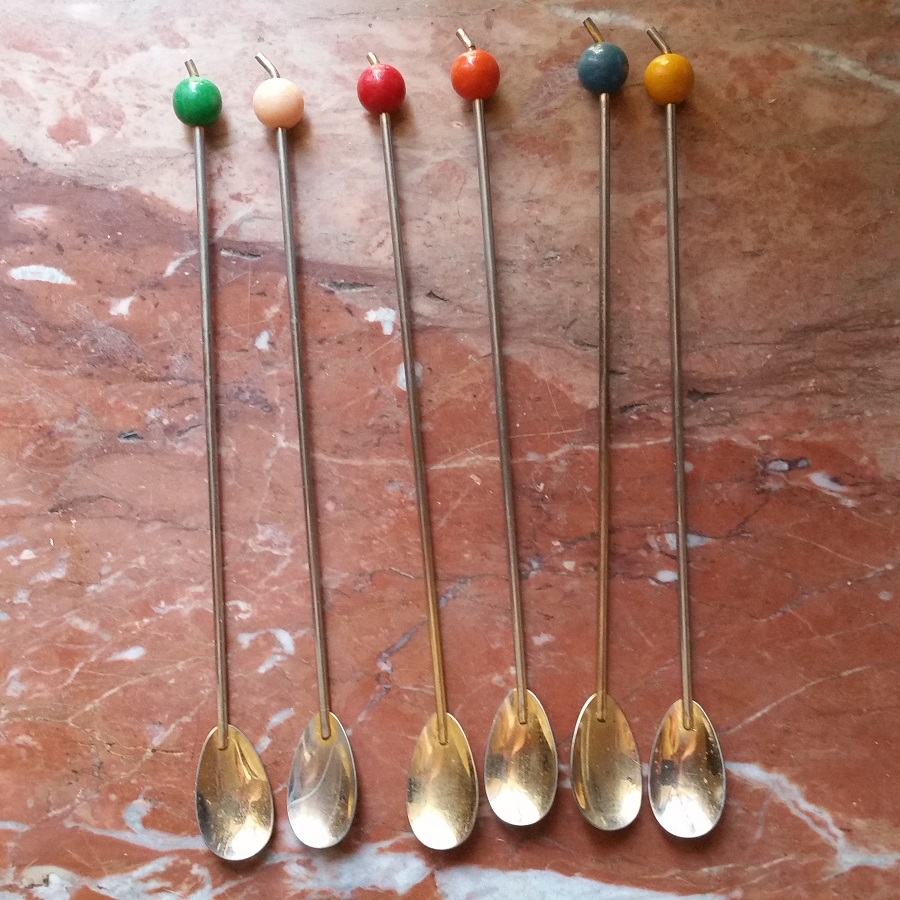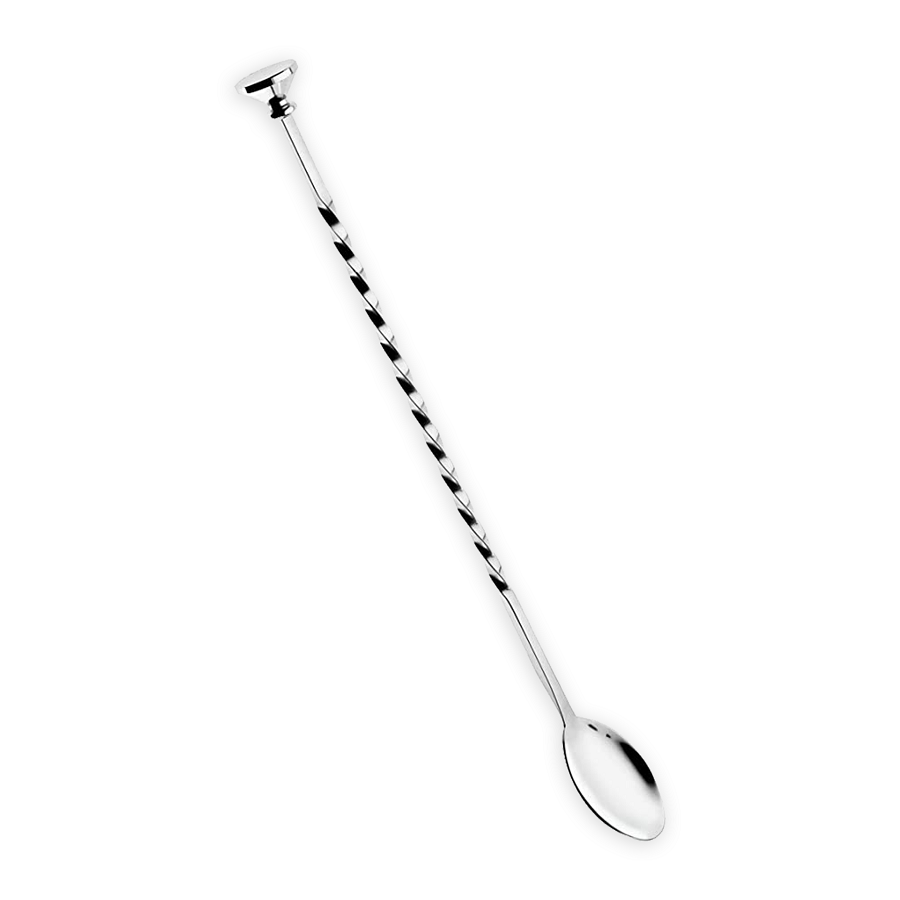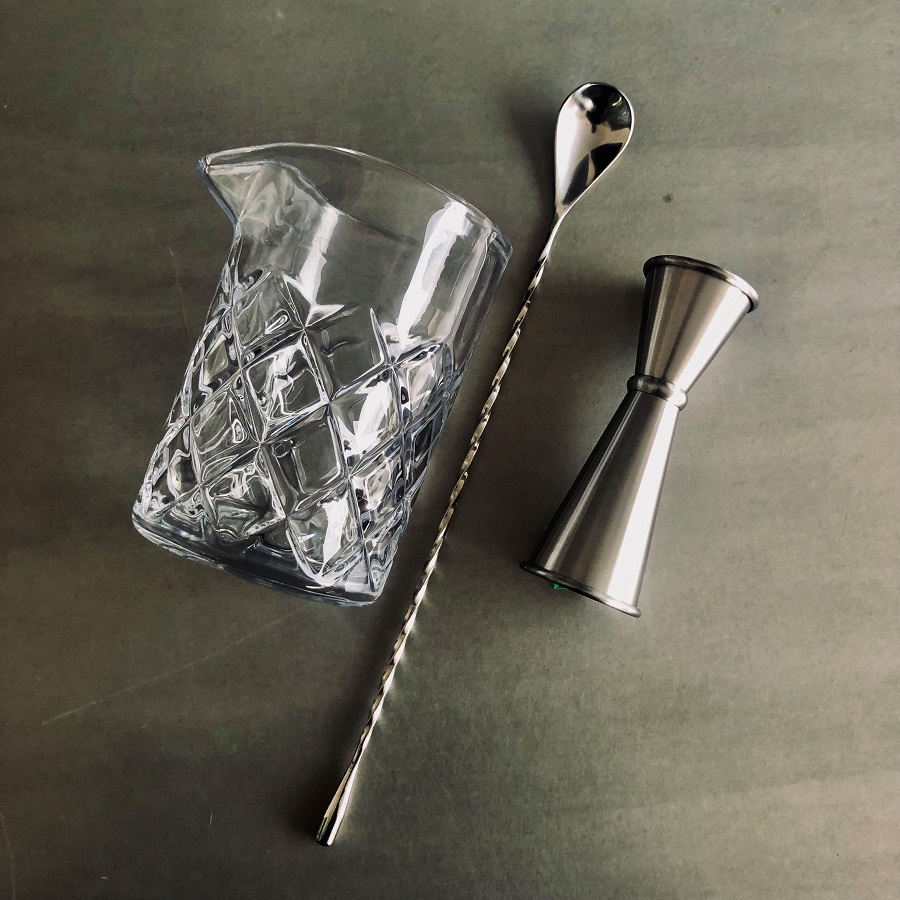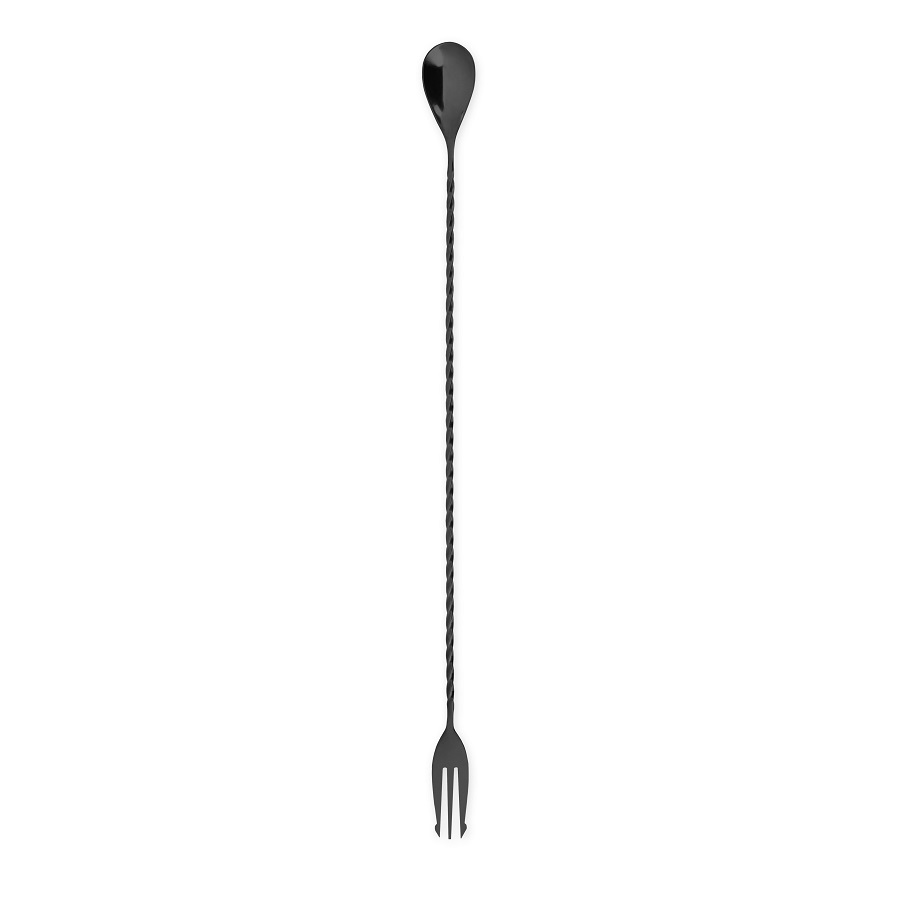Introduction
Cocktail crafting is an art form that requires precision, creativity, and a touch of finesse. Among the many tools in a bartender’s arsenal, the cocktail spoon stands as a testament to the delicate balance between tradition and innovation. Far from being just a simple stirring implement, the cocktail spoon is a versatile gadget that can elevate your mixology skills to new heights. This guide will delve into the world of cocktail mixing, focusing on mastering the use of a cocktail spoon to create perfectly balanced and visually appealing drinks.

Understanding the Cocktail Spoon
A cocktail spoon, also known as a bar spoon or long-handled spoon, typically measures around 12 inches in length and features a slender, twisted stem. Its design is intentional, allowing for efficient stirring without aerating the drink, which is crucial for maintaining the integrity and clarity of certain cocktails. The spoon usually has a small spoon bowl at one end for measuring small amounts of ingredients or adding garnishes, and a flat disk or fork-like tool called a “spoon tail” at the other, useful for crushing ice or picking up olives and cherries.
Why Use a Cocktail Spoon?
- Controlled Stirring: The extended length of the spoon provides better control when mixing ingredients in tall or narrow glasses and shakers, ensuring a consistent blend without over-diluting.
- Aeration Avoidance: Unlike shaking, stirring with a spoon minimizes air bubbles, preserving the clarity and texture of spirit-forward cocktails like Manhattans and Martinis.
- Temperature Control: Stirring gently cools the drink without adding too much ice melt, which can dilute the flavors.
- Precision: The spoon’s slim profile allows for precise ingredient integration, especially important for layered cocktails where each layer needs to be distinct.
Technique Matters: How to Stir with a Cocktail Spoon
- Preparation: Gather all your ingredients and place them in a mixing glass filled with enough ice to cover them. Ensure your spoon and mixing glass are clean and chilled for optimal results.
- Hold the Spoon Correctly: Grip the spoon near the middle, using your thumb and index finger for control. Rest your hand on the rim of the glass for stability.
- Stirring Motion: Using a steady, gentle motion, rotate the spoon between your fingers, moving it around the perimeter of the glass. Aim for around 30-45 revolutions, depending on the desired dilution and temperature.
- Straining: Once stirred, use a strainer to pour the mixture into a prepared serving glass, leaving any unwanted ice behind.
- Finishing Touches: Add garnishes and serve immediately to maintain the ideal temperature and flavor profile.
Advanced Techniques and Tricks
- Layering: For drinks requiring layers (like a Pousse-Café), use the back of the spoon, inverted, to slowly pour each layer over the previous one, allowing them to settle without mixing.
- Chilling Glassware: Dip the spoon bowl in the cocktail and use it to chill the inside of the serving glass before pouring.
- Ice Manipulation: Use the spoon tail to gently crush ice for drinks that call for a slightly crushed consistency, like an Old Fashioned.
Maintaining Your Cocktail Spoon
To ensure longevity and hygiene, always clean your cocktail spoon thoroughly after use, preferably by hand washing to preserve its finish. Store it in a dry place to prevent rusting or tarnishing.

The Anatomy of a Classic Cocktail Spoon
Before delving into its applications, let’s first understand the design of a classic cocktail spoon. Typically composed of stainless steel for durability and hygiene, it features a long, slender handle with a twisted or spiral stem. This unique design not only adds aesthetic appeal but serves practical purposes such as facilitating smooth stirring and layering of ingredients. The other end usually terminates in a small spoon bowl, ideal for measuring smaller amounts of syrups or bitters with precision.
Stirring to Perfection
The most fundamental use of the cocktail spoon is in stirring cocktails. Unlike shaking, which aerates and dilutes drinks rapidly, stirring gently combines ingredients while allowing for controlled dilution from the ice. This method is preferred for spirit-forward cocktails like the Martini, Manhattan, or Negroni, where clarity and a silky texture are paramount. A skilled bartender will use the spoon to rotate the mixture around the ice, ensuring every ingredient melds harmoniously without over-diluting the drink.
Layering Liquids
The cocktail spoon’s length and slim profile make it an indispensable tool for creating layered cocktails, such as the Pousse-Café or B-52. By carefully pouring dense liquids over the back of the spoon, they can be layered atop one another, creating a visually striking gradient of colors and flavors. This technique requires patience and a steady hand, but the spoon’s design facilitates a slow, controlled pour that encourages each layer to settle gently.
Measuring & Sampling
While not as precise as a jigger, the small spoon bowl at the end of a cocktail spoon can serve as an impromptu measuring tool for small quantities of ingredients, particularly when a recipe calls for dashes or drops of bitters, syrups, or liqueurs. Moreover, it allows the bartender to taste-test mixtures before finalizing the cocktail, ensuring balance and quality control.
Ice Handling
The long handle of a cocktail spoon doubles as an extension of the bartender’s hand when handling ice. Whether it’s to gently guide ice cubes into a shaker or to extract a single cube from a bucket without splashing, the spoon provides the necessary reach and precision. It also aids in removing excess ice or froth from the top of a stirred drink before straining.
Aesthetic Enhancement
Beyond its functional uses, the cocktail spoon contributes to the overall aesthetics of cocktail preparation. The graceful motion of stirring, the delicate act of layering, and the polished gleam of stainless steel all contribute to the performance aspect of mixology, enhancing the customer’s experience. A well-designed spoon can even become a conversation starter, adding a touch of sophistication to the bar counter.
Innovation and Adaptation
As mixology continues to evolve, so does the role of the cocktail spoon. Modern variations now include spoons with integrated strainers, adjustable lengths, and even temperature-sensitive materials designed to indicate optimal dilution. These innovations reflect the ever-growing creativity within the industry, pushing the boundaries of what a simple tool can achieve in crafting exquisite cocktails.

Understanding the Cocktail Spoon
The cocktail spoon, or bar spoon, is more than just an elongated utensil. Its design typically features a long handle, a twisted stem for better grip, and a small spoon bowl at one end, sometimes accompanied by a flat disk or fork at the other. These features serve multiple purposes, from measuring small amounts of ingredients to facilitating the perfect mix.
- Twisted Stem: Enhances grip and control during stirring, reducing hand fatigue and allowing for precise movements.
- Spoon Bowl: Ideal for scooping, measuring (often 5ml per spoonful), or adding finishing touches like a float of liqueur.
- Flat Disk or Fork End: Used for layering drinks, muddling ingredients, or even as a handy garnish picker.
The Art of Stirring
Stirring is the gentle mixing method used primarily for spirit-forward cocktails that call for clarity and minimal dilution. It’s ideal for drinks containing delicate ingredients like vermouth or premium spirits you don’t want to bruise with aggressive shaking.
Conclusion
Mastering the art of using a cocktail spoon is a fundamental step towards becoming a proficient bartender or home mixologist. It not only enhances the taste and presentation of your creations but also adds a touch of elegance to the entire cocktail-making process. With practice, you’ll develop a keen sense of how to stir each cocktail to perfection, unlocking a world of complex flavors and textures in every sip. So, grab your spoon, choose your spirits wisely, and embark on a journey to create cocktails that are as delightful to the eye as they are to the palate.


